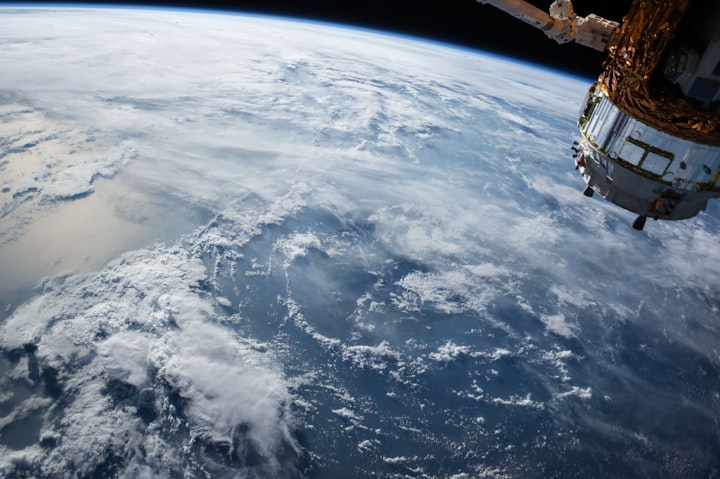NASA funds experimental radiation shield and Mars climbing robot
NASA funds experimental radiation shield and Mars climbing robot
NASA recently announced funding for new spacecraft projects, including a proposal for spacecraft protection and a robot that could climb the walls of Martian caves. NASA recently announced funding for its NASA Innovative Advanced Concepts (NIAC) program, which aims to support new design ideas and unprecedented space technology, its NASA Innovative Advanced Concepts (NIAC) program, which aims to support machine design ideas and technologies. unprecedented spatial exploration. NASA recently launched a fundraising program through its NIAC (NASA Revolutionary) program, which aims to develop technology strategies that transform unprecedented exploration activities and technologies.
NASA recently introduced funding for its NASA Advanced Ideas of Excellence (NIAC) program, which aims to help build the ever-expanding space concept and unprecedented space technology, NASA. ), which aims to develop the concepts of game-changing machine designs and test technologies that have never been seen before. In 2011, the Planetary Science Decade Review, a report by the National Academy of Sciences, Engineering, and Medicine that contains an influential collection of recommendations from the planetary science community, states that NASA's planetary exploration program is leading the decade between 2013 and 2022. should. the start of a sample return campaign. Mars, a three-project project to collect, deliver, and receive additional Martian samples from Earth safely. Following the success of its predecessor, and responding to the recommendations of the Decade of Planetary Science, NASA announced NASA's intention to launch a new rover mission to Mars in 2020 at the American Geophysical Union conference in December 2012. -up missions), Science The Panel of NASA-sponsored Determinations for the Mars 2020 project published a report in July 2013 that the campaign should "select and maintain a set of certified samples in the final available field."
Venus Sample Return Mission Symbolic Representation of the Venusian Atmosphere and Cloud Particle Return of Astrobiology Sara Seeger Another new study under the NIAC program will look at how space samples are collected in the Venusian sky. Some new research under the NIAC program will focus on how to collect air samples from the Venus sky. One of NIAC's new research programs will look at how air samples can be taken from the Venus sky.
The research technology will use a balloon-mounted platform, connected to a rocket, to collect gas particles and clouds before being returned to Earth for analysis. The SCOPE concept (ScienceCraft Exoplanet Exploration) will use this technology with a new spectrophotometer capable of studying the target structure integrated into the actual solar sail frame. The SCOPE (ScienceCraft for Exploration of the Outer Planets) proposal will use solar panels that incorporate a different spectrometric sensor that can detect the formation of target objects within the body of solar cells.
The SCOPE concept (ScienceCraft for Exoplanet Discovery) will use this proprietary technology with a new display capable of studying target formation, built on the precise structure of a photovoltaic canopy. When activated, the technology creates an "expanded magnetic field around the spacecraft that disrupts cosmic rays," according to a leading project. Once opened, the system will produce an "expanded magnetic field outside the spacecraft that blocks cosmic radiation," Donghia said. To protect workers, the NIAC study examined the concept of a design that Elena D. Ongia of the University of Wisconsin-Madison called a "functional magnetic shield."
ReachBot works by “stretching arms at distant objects or in distant places” in Mars caves, says Marco Pavon of Stanford University in California. Astronomers are eager to explore the many areas of Martian caves that have been discovered by the spacecraft around the Martian cave, and the ReachBot is an imaginary vehicle that passes through these undefined underground.
Project Pi investigates the possibility of using an arrow machine to strike an invader between planets and a series of microbes. Another benefit of putting part of this system on the moon, he says, is gravity, which will allow scientists to explore new types of missiles. Another benefit of getting a month's worth of such a program, he says, is that gravity will allow scientists to learn more about what types of arrows they should use. NASA hopes to show that the technology is effective enough to develop helicopters that can collect samples, take aerial photographs and carry payloads of future equipment.
There are no shortcuts when you build a plane designed for Mars. When the Mars Helicopter lands on Mars in 2021, it will make five of the most difficult aircraft and possibly take pictures. Save 21% on Terraforming Mars and Win Red Planet A popular board game about interplanetary colonization has a 21% discount on Amazon. Perseverance, nicknamed Percy, [2] is a rover the size of a vehicle designed to explore the Jezreel Crater on Mars as part of NASA's Mars 2020 missile.
NASA NICER Telescope Sees Magnets Spots on Magnetar For the first time, NASA researcher Neutron Star Internal Composition Research (NICER) observed the melting of millions of X-ray dots in a magnetic field, the star's sphere that could not pass a magnetic field, a magnetic field. Astronauts who are heading to the Moon or Mars in the future are likely to encounter large cosmic rays during their voyage, including huge forces.






Comments
There are no comments for this story
Be the first to respond and start the conversation.